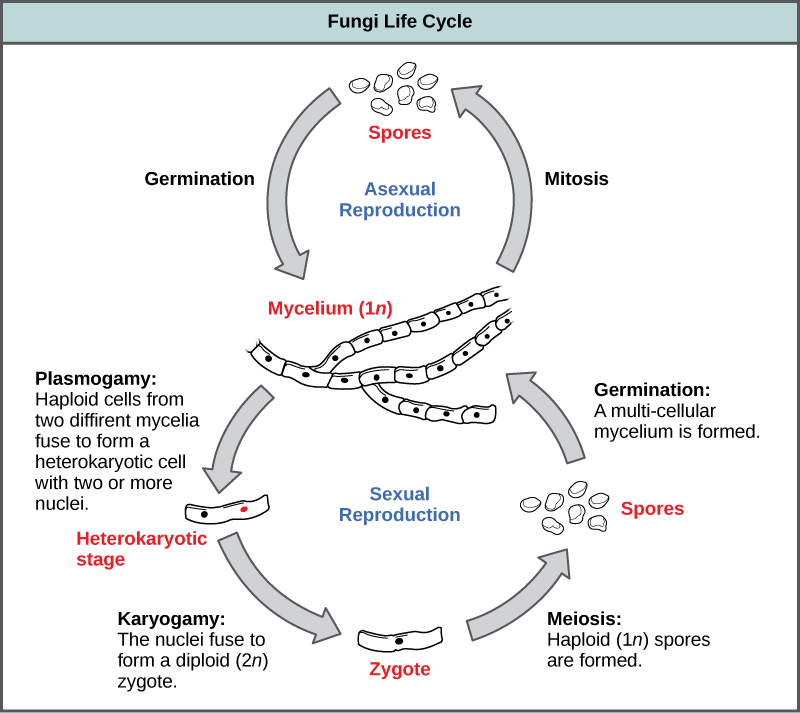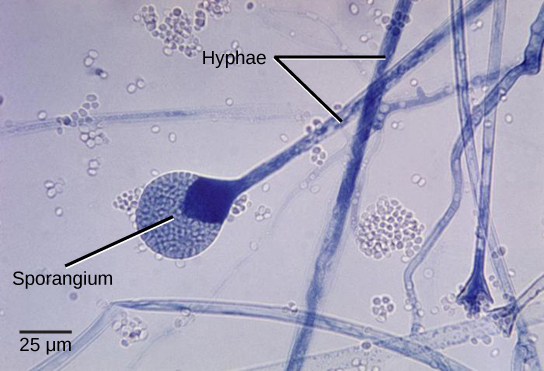| << Chapter < Page | Chapter >> Page > |
Some fungi are parasitic and use enzymes systems similar to the ones described above to break down plant cell walls and access plant resources within the cell. Other parasitic fungi can also penetrate the outside defenses of animals and acquire nourishment from the organism. These fungi are pathogenic and cause disease in the host see the pathogenic section for more information.
Fungi reproduce sexually and/or asexually. When Fungi reproduce sexually, spores are produced by meiosis, and these spores are referred to as meiospores. Fungi can also produce spores mitosis (asexual reproduction), and the spores produced are called mitospores. There are groups of fungi that reproduce only using mitospores are called the mitosporic fungi.
In both sexual and asexual reproduction, fungi produce spores that disperse from the parent organism by either floating on the wind or hitching a ride on an animal. Fungal spores are smaller and lighter than plant seeds. The giant puffball mushroom bursts open and releases trillions of spores. The huge number of spores released increases the likelihood of landing in an environment that will support growth ( [link] ).

Fungi reproduce asexually by fragmentation of the mycelium. Fragments of hyphae can grow new colonies which are identical. The fragmentation of mycelium maintain clonal populations adapted to a specific niche, and allows for more rapid dispersal than sexual reproduction.
The most common mode of asexual reproduction is through the formation of asexual spores or mitospores, which are produced by one parent only (through mitosis) and are genetically identical to that parent ( [link] ). Spores allow fungi to expand their distribution and colonize new environments. They may be released from the parent thallus either outside or within a specialized reproductive structure.

There are many types of mitospores. Conidiospores are unicellular or multicellular spores that are released directly from the tip or side of the hypha. Other mitospores originate in the fragmentation of a hypha to form single cells that are released as spores; some of these have a thick wall surrounding the fragment. Yet others bud off the vegetative parent cell. Sporangiospores are produced in a sporangium ( [link] ).

Sexual reproduction introduces genetic variation into a population of fungi. In fungi, sexual reproduction often occurs in response to adverse environmental conditions. During sexual reproduction, two mating types are produced. When both mating types are present in the same mycelium, it is called homothallic, or self-fertile. Heterothallic mycelia require two different, but compatible, mycelia to reproduce sexually.

Notification Switch
Would you like to follow the 'Principles of biology' conversation and receive update notifications?